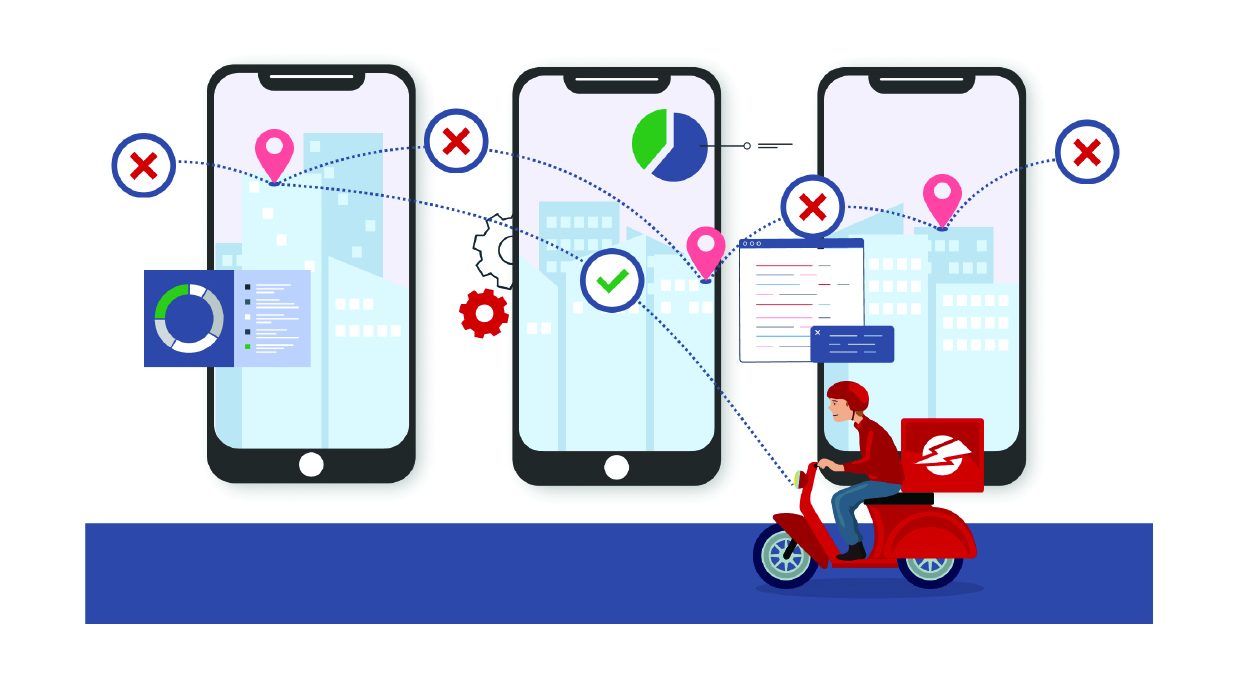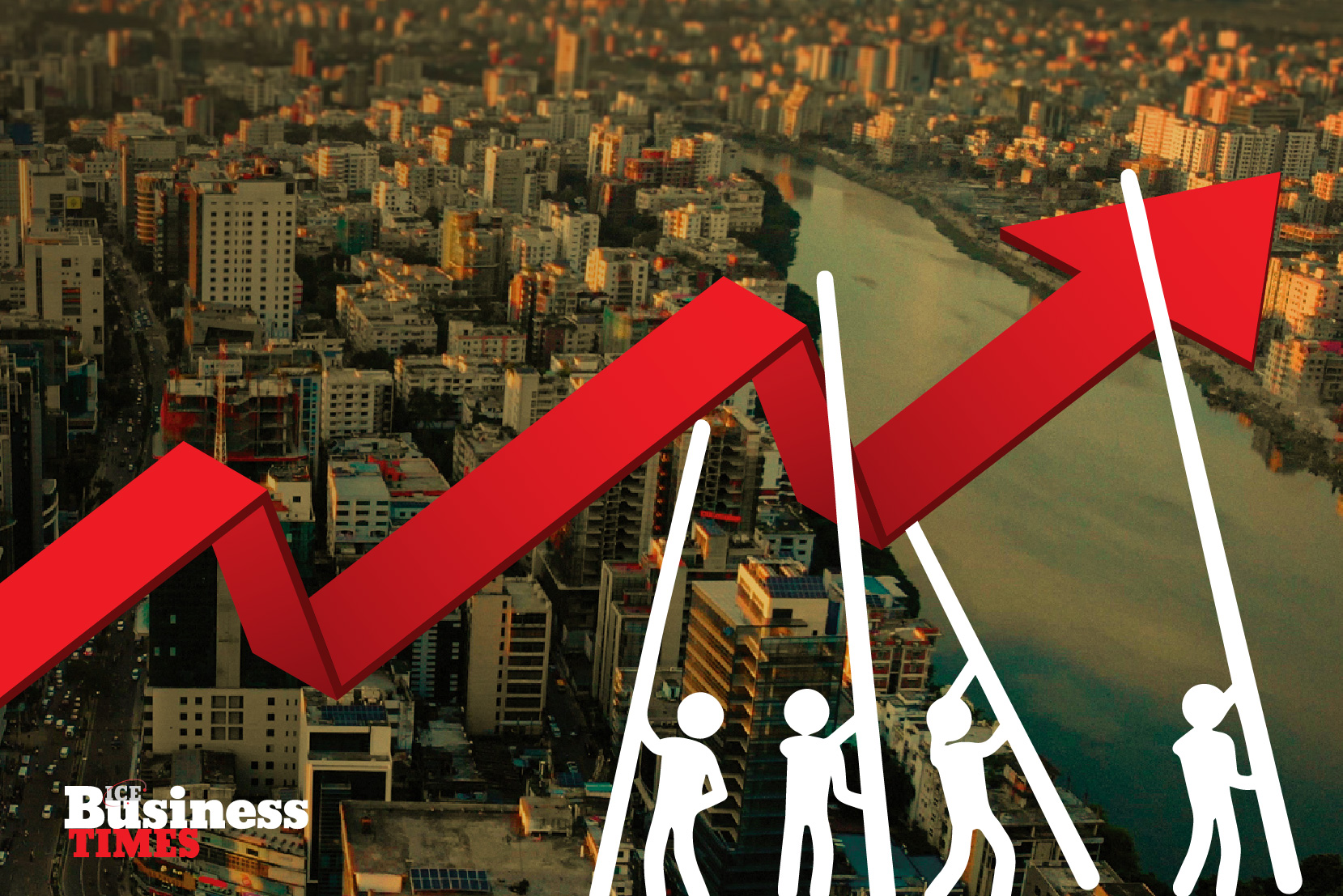Ever since the COVID-19 pandemic accelerated e-commerce activity globally, consumer expectations regarding the delivery of goods at the right time, in the right condition have become major talking points.
An April 2022 UNCTAD report highlights how the prominent rise in consumer e-commerce activity has been galvanised by the pandemic and has continued to sustain through 2021 thanks to the rise in online transactions. Online purchases by internet users have increased, on average, from 53% prior to 2019, to 60% in 2020-21, across 66 countries across the globe. The greatest increases have occurred in developing countries such as the United Arab Emirates, Bahrain, Uzbekistan and Thailand, and if one includes the $2.9 trillion digital commerce transactions in 2021, by the 7 nations that amount for half of global GDP, there is no doubt that logistics and last-mile delivery companies have and will continue to play pivotal roles in the supply chain of the e-commerce ecosystem- both internationally and within Bangladesh.
THE LOGISTICS FACTOR
In the early days of the pandemic, non-essential cargo, in a lot of different countries around the world, was getting delayed by months at a time and freight forwarding costs were also on the high. Retailers recognised the need to invest in distribution centres and warehouses to cater to the rising demand from new generation e-commerce channels. These investments helped expedite the development, design, and execution of logistics and supply chain processes.
The latest disruptive technologies include cutting-edge robotics, augmented reality, and drones and they assist companies in the industry to remain competitive, ensure customer satisfaction, and reduce operational expenditures.
LOGISTICAL LEARNINGS
While logistics generally means the management of products or resources that are in-storage or in-transit, in the context of e-commerce, the process facilitates enterprises to deliver orders to consumers. Logistical management is important to retailers as it defines their role in identifying potential shipping and distribution companies, as well as to ascertain their effectiveness.
Today, businesses of all sizes increasingly rely on back-end supply chain management to keep their operations afloat. If an enterprise does not have the capacity to own a traditional brick-and-mortar facility for inventory housing, there are alternatives to outsource the assistance from third-party logistics providers who will ensure that commercial activities run without a hitch and without reservations concerning product storage and shipping.
For small-scale businesses, the logistical process is very simple. It begins with a customer ordering a product at an online store and progressing onto an integrated inventory management software on the e-commerce site, initiating the transaction.
The latest disruptive technologies include cutting-edge robotics, augmented reality, and drones and they assist companies in the industry to remain competitive, ensure customer satisfaction, and reduce operational expenditures.
FROM CART TO CUSTOMER
The task to manage logistical processes is no small feat for any entrepreneur who wishes to launch a B2B e-commerce channel. The journey is split into two segments: from manufacturers to retailers and from retailers to end consumers. Logistics intersect with online businesses through the following processes: Suppliers or Manufacturers, Inventory Management, Warehousing, Carriers and Order Fulfilment.
Manufacturers produce their wares and are ready to send this inventory to a business destination. They ship them to fulfilment or logistics centres at the time of order.
Inventory Management includes utilising rigorous methods to keep track of stored goods and virtual stores to monitor stocks and predict higher selling items. This enables businesses to make sure that inventory does not run out and helps them understand sales trends better.
Storage and Warehousing is a logistical component that refers to physical stores that enterprises use to house, manage, and trace products that are yet to be delivered to end consumers. Sub segments of storage and warehousing include fulfilment centres, distribution hubs and sorting facilities.
Shipping carriers like FedEx, UPS, USPS, and DHL then transfer products to their destination, typically through trucks or planes.
Order fulfilment is the most important aspect of logistics and e-commerce as it ensures that customers receive their goods promptly and in good condition. Organisations can either outsource this service to a third-party provider or invest in an in-house order fulfilment service- usually depending on the end consumers’ geographical location, size of business, and order quantity.
It’s important for e-commerce shippers, especially those who aim to outsource all or part of their logistical functions to other businesses, to build relationships with third-party logistics (3PL) firms. Through fruitful partnerships, 3PL companies take care of all aspects of fulfilment, storage and tracking of inventory, and managing inbound shipments, while businesses focus on their online objectives.
ENTERING THE LAST MILE
Forward logistics refers to the journey of a product from a seller or warehouse to its intended destination and can be divided into three phases: first, middle, and last miles. Last-mile delivery is basically the final leg in the shipping process.
Last-mile delivery begins when an order is picked up from a local hub and ends when it reaches the hands of the customer. Service providers specialising in the last-mile delivery of parcels and products, are often required to deliver items within a specified time frame and geographical area so that customers get their orders as quickly as possible. All shipping needs are taken care of starting at the last mile. A third-party logistics firm (3PL) manages the process by employing the services of different carriers and courier delivery firms to deliver orders to multiple locations as fast as possible. The delivery is performed by a delivery agent, who picks up the order from the hub of the destination area and delivers it to the customer. Legacy and startup delivery companies have been set up to assist e-commerce businesses meet the exponentially growing customer demands for quicker, same or next-day, and on-demand delivery.
LEADERS OF LOGISTICS AND THE LAST MILE
The international logistics and last-mile delivery industry is led by legacy companies such as Fedex, UPS, XPO, DHL and recently disrupted by Amazon.
According to a StartUs Insight study, the 5 top global startup leaders in last-mile delivery include Narvar (a US Based Delivery Platform), Tiny Mile (a Canadian Last Mile as a Service -LMaaS), Roadie (for US Inner-City Deliveries), PiggyBee (Cross border Crowdshipping) and Matternet (US Fulfilment Drones).
As cited in a report by Anchanto, DTDC (India), Janio (Singapore), Skootar (Thailand), Aramex (Dubai) , J&T Express (Singapore), After 5 (Malaysia), 2GO (Philippines), AhaMove (Vietnam), and LWE (Hong Kong) are some names from the Top 50 Last Mile Carriers startups from the APAC region.
BOOMING IN BANGLADESH
According to Textile Today, the market size of the logistics industry in Bangladesh is around $1.5 to $2 billion and it is no surprise that there are over 90 Logistics tech startups in Dhaka. Among them, Pathao, e-courier, Paperly, RedX, Truck Lagbe, Biddyut, Delivery Tiger, E-desh, E-logistics, Holister and Startrack are some of the prominent players in the tech based logistics and last-mile delivery space. Meanwhile, superstores like Shwapno and virtual stores such as Chaldal offer delivery of basic groceries, although delivery times are not always on the same day.
DELIVERING SOLUTIONS
As logistics and last-mile delivery are crucial components of the customer satisfaction journey, it is important to address challenges that the industry bears. Last-mile shipping is the costliest part of e-commerce delivery and so reducing failure deliveries and delivery exceptions would go a long way to smooth out last-mile delivery experiences. Similarly, being able to forecast demand will allow companies to prepare themselves for peak or slow hours and respond to customer needs better. Same-day-deliveries are becoming the norm and virtual shops that want to succeed have to follow suit. Delays in orders, and absence of proper order tracking mechanisms will affect customer satisfaction and retention and companies will do well to devote resources for same-day-deliveries with their internal fleets or partners.
Customers often expect lower or free shipping without being aware of the burden it puts on retailers. Communicating and finding an ideal win-win situation to divide costs is key.
According to a study by the University of Delaware, last-mile services form up to 28% of aggregate shipping costs. Customers often expect lower or free shipping without being aware of the burden it puts on retailers. Communicating and finding an ideal win-win situation to divide costs is key. Free shipping offers, such as those put out by Amazon, incentivise customer loyalty and these can be availed on selected items or minimum order values.
International taxes also pose problems for cross-border transactions. Customs tend to charge extra upon reaching the destination country and these charges can deter customers from purchasing products. It is essential that companies negotiate all costs with their carriers before publishing final prices to the customer.
Proper training must be provided to last-mile delivery personnel as they are the ones who meet customers and maintain the goodwill of the parent company. The first physical impression may be the last impression in a consumer’s mind.
Technical errors caused by inventory management or shipment tracking software need to be addressed as well. Disruption of information and delivery can cause brand reputation to plummet, and having a competent back up ICT team is critical if companies intend to provide quick solutions for customers.
A decentralised warehousing strategy can help companies locate products close to customers to reduce shipping costs and delivery times. This helps lessen the last-mile and ensures that customers derive satisfaction from these order fulfilment services.
Finally, returns can translate into heavy losses for companies offering products and services on delivery, but according to Transport Tropics, if returns can be separated from the expected forward moving supply chain of products, it is even possible for digital retailers to employ various mechanisms and minimise a good percentage of losses.
E-commerce is here to stay. Whether it’s ordering your next meal or your favourite item from Alibaba, the convenience of door-to-door delivery is not one to be easily overridden. In a fast-paced and commercial world, companies must take up the challenge and see this as yet another opportunity to make their customers happy. If logistics and last-mile delivery players can smooth out the rough spots and make the delivery service seamless for consumers, the exponential growth trajectory of this sector can only improve.
















